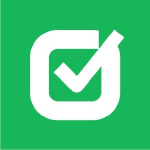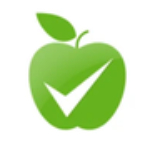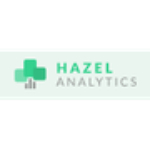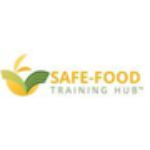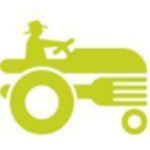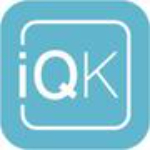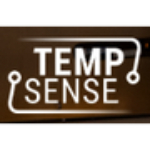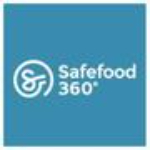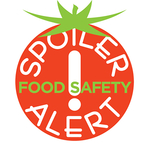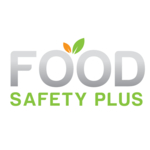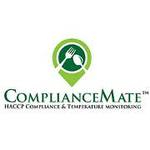TechnologyCounter provides genuine, unbiased real user reviews to help buyers make informed decisions. We may earn a referral fee when you purchase through our links, at no extra cost to you.
List of Best Food Safety Software
Showing 1 - 13 of 13 productsFoodDocs is a solution for businesses in the food industry. This innovative software is designed to streamline and simplify food management processes, ensuring compliance with regulatory standards and guaranteeing the safety of food products. With Fo...Read FoodDocs Reviews
Smart Food Safe is a Food Safety Software tailored for use by Startups, SMEs, and Enterprises. Our software provides a complete range of solutions designed for Web App. This advanced online Food Safety system allows for Android and mobile support, a...Read Smart Food Safe Reviews
Food Ready, the ultimate software designed to streamline and simplify your food consumption system. Say goodbye to hours spent planning meals and managing grocery lists. With Food Ready, you can easily track your meals, create grocery lists, and disc...Read Food Ready Reviews
Hazel Analytics is a and innovative software that provides valuable insights and data-driven solutions for businesses in various industries. With its advanced technology and user-friendly interface, Hazel Analytics helps companies gain a competitive...Read Hazel Analytics Reviews
Safe Food Training Hub, your one-stop solution for all your food safety training needs. Our platform is designed to help businesses and individuals easily access essential food safety courses and information, ensuring the highest standard of food saf...Read Safe Food Training Hub Reviews
GoHACCP is a solution for maintaining food safety and compliance. Developed by industry experts, this innovative software streamlines the process of Hazard Analysis and Critical Control Points (HACCP) to ensure the highest level of quality and safety...Read GoHACCP Reviews
iFoodDS is a solution for streamlining and optimizing your food delivery service. With its advanced features interface, iFoodDS takes your delivery process to the next level, helping you deliver meals to your customers faster and more efficiently. Tr...Read iFoodDS Reviews
iQKitchen is a software that revolutionizes kitchen management for restaurants, cafés, and other food establishments. Designed to streamline processes and enhance efficiency, this innovative tool boasts powerful features to simplify inventory manage...Read iQKitchen Reviews
Temp-Sense, the ultimate temperature monitoring software designed to streamline and simplify your temperature tracking process. With advanced features and user-friendly interface, Temp-Sense provides accurate and real-time temperature readings that e...Read Temp-Sense Reviews
Safefood 360, the all-in-one solution for food safety management. With its advanced features and user-friendly interface, Safefood 360 streamlines the process of maintaining food safety and compliance for businesses of all sizes. Say goodbye to tedio...Read Safefood 360 Reviews
Spoiler Alert Food Safety is a solution for ensuring food safety and preventing spoilage in the food industry. This innovative software puts a stop to costly waste and potential health hazards by effectively tracking and managing expiration dates, te...Read Spoiler Alert Food Safety Reviews
Food Safety Plus is a software created to enhance food safety and quality in the food industry. Developed to cater to the growing demands of food safety regulations, this innovative tool provides efficient solutions for companies to ensure the safety...Read Food Safety Plus Reviews
ComplianceMate is an innovative solution for businesses looking to streamline their food safety monitoring process. With its advanced technology, ComplianceMate enables real-time temperature and task logging, ensuring compliance and peace of mind. Sa...Read ComplianceMate Reviews
iQKitchen is a software that revolutionizes kitchen management for restaurants, cafés, and other food establishments. Designed to streamline processes and enhance efficiency, this innovative tool boasts powerful features to simplify inventory manage...Read iQKitchen Reviews
iFoodDS is a solution for streamlining and optimizing your food delivery service. With its advanced features interface, iFoodDS takes your delivery process to the next level, helping you deliver meals to your customers faster and more efficiently. Tr...Read iFoodDS Reviews
- What Is Food Safety Software?
- Top Reasons Why Businesses Need Food Safety Software?
- What Are the Top Key Features of Food Safety Software?
- What Are the Top Benefits of Food Safety Software?
- What Are the Steps to Choose the Right Food Safety Software?
- What Are the Types of Food Safety Software for Different Industries?
- What Are the Technology Trends for Best Food Safety Software?
- What Are the Deployment Options for Food Safety Software?
What Is Food Safety Software?
Food safety software is a tool that assists restaurants, supermarkets, and other food service establishments in meeting food safety laws. It aids with the tracking and monitoring of food products, ingredients, and temperatures. This helps to verify that the food served is safe and meets regulatory requirements.
The software is capable of producing reports, tracking food inventory, monitoring temperature, and logging inspection findings. It is also useful for creating employee training materials and tracking certification. Food safety management software is a priceless asset in the restaurant business.
It protects restaurants and other enterprises from health inspections, fines, and legal punishment. It can also save time and money by assisting them in identifying and correcting any potential food safety issues as early as feasible. A food safety compliance system is a must-have for any food-service business, and it should be integrated into your restaurant's daily operations.
Top Reasons Why Businesses Need Food Safety Software?
1. In order to maintain precise documentation of adherence to food safety regulations, it is imperative to employ a system that enables the gathering and tracking of data in real time.
2. The purpose of this initiative is to notify management of any modifications in food safety standards and regulations.
3. In order to ensure the preservation of food goods and guarantee their safety for consumption.
4. In order to mitigate the potential hazards associated with food contamination, it is imperative to employ a system that effectively monitors food temperatures and other relevant environmental conditions.
5. The primary objective is to offer effective functionalities for tracking and reporting documents.
6. In order to ensure precise monitoring of the flow of entering and exiting materials.
7. In order to facilitate inventory management procedures and expedite the identification of ingredients with elevated risk factors.
8. In order to enable enterprises to stay abreast of the most current industry requirements.
9. In order to facilitate prompt implementation of appropriate measures in the event of any food safety concerns.
10. The primary objective is to facilitate enterprises in the identification and mitigation of potential risks prior to their manifestation and subsequent negative consequences.
11. In order to ensure adherence to legal and governmental rules, it is imperative to establish comprehensive audit trails.
12. In order to guarantee that all suppliers furnish substances that are safe and promote well-being.
13. In order to mitigate the amount of time lost as a result of food recalls and outbreaks.
14. In order to validate cleanliness procedures and enhance staff adherence and education, it is necessary to conduct verification processes.
15. In order to facilitate prompt responses to consumer complaints and regulatory inquiries, it is necessary to provide businesses with the necessary tools and resources.
What Are the Top Key Features of Food Safety Software?
The top key features of food safety software include:
• Automated Hazard Analysis and Critical Control Point (HACCP): This functionality assists food enterprises in the identification and mitigation of food safety hazards, as well as in the maintenance of adherence to both domestic and global food safety regulations.
• Traceability: This functionality enables enterprises to monitor ingredients, products, and associated data throughout the whole production process, facilitating a holistic perspective on food safety information.
• Smart Data Collection: The implementation of intelligent data collecting techniques enables businesses to effectively acquire and retain data from many sources such as equipment, processes, and other essential elements, with the primary objective of facilitating auditing and reporting activities.
• Intuitive User Interface: The presence of a user interface that is both user-friendly and intuitive facilitates efficient user comprehension of software navigation and safety protocols.
• Quality Assurance and Risk Mitigation: Quality assurance provides enterprises with the capability to identify, track, evaluate, and address any deviations that have the potential to result in food safety hazards.
• Cloud Storage: Cloud storage solutions offer a secure means of storing important food safety data, thereby guaranteeing that solely authorized individuals are able to access the information.
• Advanced Alerting System: Trigger-based alerts are a mechanism employed by enterprises to promptly notify them of any potential accidents or breaches related to food safety.
• Compliance Reporting: Comprehensive compliance reports facilitate the monitoring of food safety processes within enterprises, allowing them to remain informed about pertinent rules.
What Are the Top Benefits of Food Safety Software?
1. Improved Traceability: Food safety software facilitates the provision of comprehensive data regarding the origins of food products, hence enabling efficient and precise monitoring and traceability across the entirety of the supply chain.
2. Effective Compliance Management: A food safety compliance system is utilized by enterprises to successfully monitor and adhere to safety standards and regulatory norms.
3. Streamlined Record-Keeping: Food safety management software streamlines the process of data entry and record-keeping, hence enhancing the ease and efficiency of generating, storing, and accessing information pertaining to food safety.
4. Improved Product Quality: Food safety software has the capacity to assist companies in the maintenance and enhancement of product quality through the identification and resolution of possible concerns prior to their escalation into significant problems.
5. Enhanced Efficiency: The utilization of top food safety software has the potential to optimize routine tasks, including product tracking, inventory management, and food safety audits. This can result in a reduction of time and effort expended on manual procedures.
6. Improved Cost Savings: The best food safety software has the potential to mitigate expenses linked to operational inefficiencies, labor expenditures, and product wastage by using automation and optimizing procedures.
7. Increased Food Safety: By utilizing the best food safety software, firms are able to effectively manage and ensure the accuracy and currency of their records, hence enabling them to proactively address any possible food safety concerns.
What Are the Steps to Choose the Right Food Safety Software?
1. Identify your food safety goals: It is imperative to thoroughly define and evaluate your food safety software requirements from the outset. Please contemplate the key elements of food safety that hold utmost significance in your operational framework, including the effective management of food allergen labeling, meticulous tracking of expiration dates, and strict adherence to government requirements.
2. Analyze the current state: It is advisable to adopt a reflective approach and evaluate the existing food safety procedures in place. Identify potential areas for enhancement that can be specifically addressed through the use of novel software solutions.
3. Research systems: Determine a range of software alternatives that possess the requisite capability to fulfill your requirements. It is advisable to take into account customer reviews, as well as compliance certifications such as ISO 22000 or FSMA.
4. Calculate costs: Examine the expenses related to the implementation of software in detail. It is imperative to thoroughly consider all pertinent expenses, including hardware, user training, and licenses, in order to guarantee a successful procurement.
5. Test the software: Conduct a practical evaluation of the program inside your specific operational context, employing authentic data, in order to ascertain its suitability in fulfilling your requirements. It is vital to ensure the optimal performance of the program within the present configuration, encompassing seamless interaction with any pre-existing systems.
6. Make the purchase: After doing a thorough evaluation and confirming that a certain alternative satisfies all of the established criteria, proceed with the acquisition. It is imperative to set a comprehensive timeline for the implementation and training processes in order to provide a smooth and effective transition.
What Are the Types of Food Safety Software for Different Industries?
Food safety software is specifically developed to enhance the efficiency and effectiveness of enterprises in managing their food safety and compliance operations. Organizations have access to several types of food safety management software, which vary depending on the specific industry in question.
The following is an enumeration of the several categories of food safety management software designed to cater to the specific needs of different industries:
1. Retail Food Industry: This particular program encompasses functionalities that facilitate adherence to food safety regulations through effective disinfection, cleaning, and sanitation measures. Additionally, it aids in the management of inventory and facilitates the traceability of products.
2. Restaurants: This particular software aids restaurants in enhancing their efficiency in managing food safety and sanitation regulations. Additionally, it can aid in the oversight of food supplier adherence to regulations and guarantee accurate food labeling and provision of information regarding food allergens.
3. Food Processing and Manufacturing: This particular software facilitates the processes of traceability, quality control, and food safety management.
4. Food Distribution: This particular software has the capability to effectively handle temperature and long-distance transportation demands, as well as facilitate the monitoring of expiration and recall dates.
5. Grocery and Supermarket: The best food safety software facilitates the management of potential contamination, recalls, and expiration dates inside a store environment, while also aiding in consumer interactions.
What Are the Technology Trends for Best Food Safety Software?
One of the prevailing technological developments in the realm of food safety software encompasses the utilization of data science, predictive analytics, and cloud computing. Data science plays a pivotal role in the identification of possible dangers, enhancement of product traceability, and optimization of food safety processes.
The utilization of predictive analytics enables firms to enhance their ability to foresee and mitigate potential food safety problems in advance. Cloud computing offers enhanced scalability and data accessibility, hence enhancing the efficacy of food safety systems.
What Are the Deployment Options for Food Safety Software?
Food safety software offers several deployment choices, including Installed, On-Demand (Software as a Service), Cloud-Based, and Mobile solutions. Installed solutions involve the installation of software onto a user's local server or network, enabling direct access by end-users.
On-demand solutions, also known as program as a Service (SaaS), are predominantly hosted on cloud platforms and offer a subscription-based model that enables users to access the program only via a web browser.
Cloud-based solutions often adhere to the Software as a Service (SaaS) paradigm, with a heightened focus on cloud storage and the ability to seamlessly integrate with other applications.
Mobile solutions are purposefully developed to facilitate access through smartphones and tablets, enabling food safety workers to remotely access and utilize the software while on the move.
